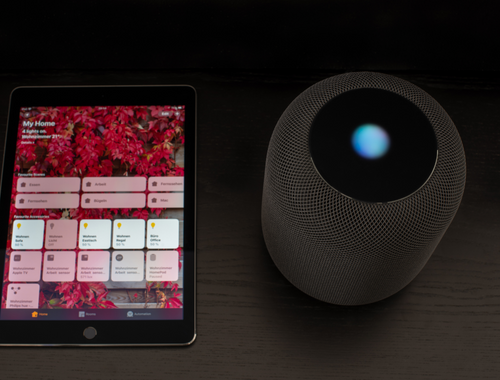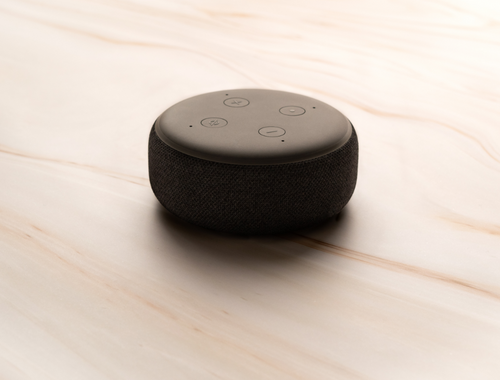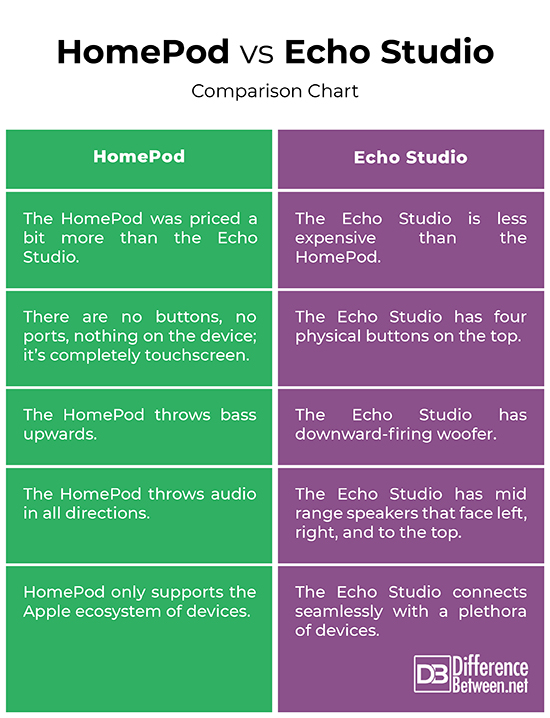Difference Between HomePod and Echo Studio
Smart speakers have come a long way since Amazon released its very first smart speaker, the Echo, to the American public back in 2014. The world is gong digital and the devices are getting smarter day by day. It’s magic everywhere; you literally can operate a device without even touching it. You don’t have to pick them to interact with them at all. One of the best examples of such devices is smart speakers. And when it comes to smart speakers, two of the leading names that probably dominate the charge of smart audio are Amazon and Apple, and their respective signature products, Echo Studio and the HomePod.

What is Apple HomePod?
Apple launched its very first smart speaker, the HomePod at its annual Worldwide Developers Conference back in 2017. Apple followed that up with the release of the smaller and cheaper HomePod Mini in 2020. It was designed to work with the Apple Music subscription service. The HomePod has had a decent run in the market, thanks to its impressive sound quality and stunning mesh design. But at the same times, it was criticized for lack of support for third party services. Starting 2021, Apple discontinued the HomePod.

What Is Amazon Echo Studio?
Amazon released its Echo Studio in 2019 to compete with other similar smart speakers on the market. The Echo Studio delivers just as much power and sound quality as smart speakers that cost twice as much. It is still one of Amazon’s best sounding smart speakers that easily outclasses the HomePod and others. The sound is amazing, thanks to the Dolby Atmos home cinema support. It delivers high-fidelity soundscape, which makes your music sound incredible.
Difference between HomePod and Echo Studio
Design
– Both the devices boast a similar cylindrical design. However, the HomePod features a mesh fabric on the outside and 7-array tweeters on the inside, plus a woofer. The Echo Studio, on the other hand, has a similar fabric covering but the whole design kind of stand out, thanks a small horizontal cut on the lower half of the unit. The Echo Studio has four physical buttons as most of other Echo devices for controls like volume up and down, mute and unmute, and summon Alexa. The Apple goes touchscreen with the HomePod.
Audio
– You probably do all sorts of things with your precious smart speaker like play music, ask queries and information, to-do lists, set alarms and reminders, check weather updates, order a pizza, and so much more. But the main thing you all use it for is its sound. That being said, both of them deliver amazing sound. The HomePod will really surprise you with its tight bass response and you’ll be blown away by how much sound a small cylindrical design can push out. The Echo Studio, thanks to Dolby Atmos immersive sound, delivers impressive audio experience itself with a perfectly balanced and neutral sound profile.
Features
– To set up the Apple HomePod, you need a device from the Apple ecosystem, like an iPhone, iPad, iPod, or something like that. Without any of the devices, you cannot setup the HomePod. Also, it can only be paired with an Apple device. The Echo Studio, on the other hand, connects seamlessly with any device you can think of, either Android or iOS. The Echo also has a 3.5mm headphone jack, so it’s a good one unless your phone doesn’t have one too. Most of the phones come without 3.5mm jack these days.
HomePod vs. Echo Studio: Comparison Chart

Summary
Talking about looks, it’s always going to be subjective. Both of them are fairly matched in terms of design, being the same round shaped design and all. But, the HomePod is uniquely beautiful and once you hold it in your hands, you can feel the true Apple luxury. There are no buttons, no ports, nothing on the device. Coming to Echo Studio, the look, fit, and finish are all perfect. However, the Echo is a bit more bulky and it has tactile buttons on the top for a lot of things. Besides, both the devices deliver high-fidelity audio, but the HomePod throws bass upwards and the Echo Studio has classic downward-firing woofer. The HomePod, however, is discontinued and is no longer available on retail stores.
Which is better HomePod or Echo Studio?
The HomePod is better in terms of sound quality and has better controls, and a neutral sound profile. However, Apple discontinued the HomePod in 2021 to focus their efforts on the HomePod Mini.
Can HomePod and Alexa work together?
HomePod is equipped with Siri, Apple’s own AI powered voice assistant, and there is no support for Alexa unless you have one of Amazon Echo smart speakers or any of the compatible smart home devices that support Alexa.
Does Echo Studio support AirPlay?
While the Echo Studio pairs with a multitude of smart home devices for easy control, it doesn’t support Apple AirPlay, at least not yet.
Is Apple HomePod better than Amazon Echo?
The HomePod was certainly one of the best smart speakers on the market when it was still in production. Starting 2021, Apple discontinued the HomePod for the smaller and cheaper HomePod Mini.
Is HomePod worth it in 2022?
The HomePod is replaced by the cheaper and smaller HomePod Mini, which is even more impressive in terms of sound quality, smart features, price point, and more. Also, the HomePod is not available anymore. So, to answer your question – No, the HomePod is not worth it in 20211 because you won’t find it any retail store.
- Difference Between Caucus and Primary - June 18, 2024
- Difference Between PPO and POS - May 30, 2024
- Difference Between RFID and NFC - May 28, 2024
Search DifferenceBetween.net :
Leave a Response
References :
[0]BIzzaco, Michael and Michael Archambault. “Amazon Echo Studio vs. Apple HomePod.” Digital Trends, 29 Mar. 2021, www.digitaltrends.com/home/amazon-echo-studio-vs-apple-homepod.
